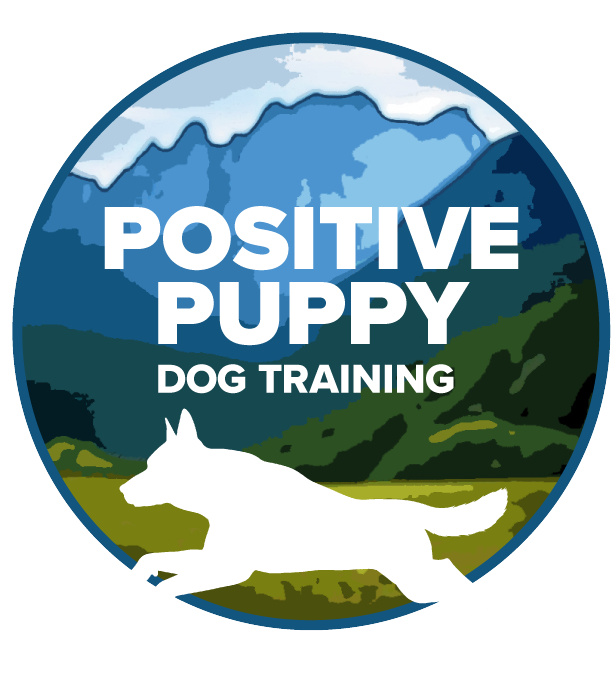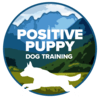Fluffy Wolves?
Years ago, my daughter’s first dog, Lucy Jo, a corgi/sheltie mix became our absolute companion in every aspect of our lives. You might recognize her from the photo/logo on my Positive Puppy van. Lucy was a rescue and had been found foraging on the streets of Twin Falls. The Animal Control officer immediately adored her and gave her to a Sheltie breeder friend of hers which is where we got Lucy from. Lucy had many life persevering skills. She was fearless and a tough cookie. As cute as she was, she was a very wise pup. We would take her camping and hiking with us everywhere. When we camped, we fed her dinner as we had ours. She never ate when we camped. Instead, as the sun would go down, she would cover her bowl of food with dirt.
For 10 years, Lucy would be my daughter’s 4-H dog and the two of them went on to win countless championships in both local and District dog shows.
More recently, I trained a very beautifully bred English black Labrador service dog. Fiona lived with me for almost 2 years as I trained her in every manner for her life in service. She would learn impeccable home manners, perfect obedience in public as well as many behaviors to help her disabled owner. One of the things she did for her owner was to retrieve anything from a can on the floor, to a newspaper or a prescription bottle, or clothing that was dropped. When Fiona would retrieve, she would quickly run to the object, then “pounce” on it but picking it up gently.
My Brinx, who is now 10 years old, was sired by one of the top German Shepherds in the world in 2005. His sire was VA Kevin v Murrtal SchH3 was the only dog in history to win the highest rating (VA) in 5 countries on one year.
Sheep herding is what German Shepherds were originally bred for. When Brinx was 2, I took him to a sheep herding clinic in Battleground, WA for one day. A year later, I entered him in an AKC sheep herding trial. The day before the trial, I took one private lesson from an expert. After working with sheep TWICE prior to the trial, Brinx earned his AKC sheep herding title. His tenacity to move the sheep and keep them close to me was instinctual and testimony to the long line of ancestry behind him. He is a highly bred, healthy and “instinctual” German Shepherd.
The point here is not to toot my own horn, but to take 3 different dogs I know personally – one a mutt, the second a well bred hunting dog, and the third a well bred sheep herding dog to point out the four things they all have in common.
Do you know what it is? All three of them had innate, insatiable instincts to perform behaviors inherited from the wolf – burying food to protect it from other opportunistic predators; pouncing on an object as if it was a mouse; and chasing prey (sheep) more politically correctly called “herding.” They also all carried that ability to be trained and work for a living.
So, when people tell you that domesticated dogs no longer carry wolf-like behaviors and instincts, they couldn’t be further from the truth. Domestication of dogs is really about bringing wolves into our lives that were the most able to be trained to help people in their daily lives. The tiniest, fluffiest, adorable dog or the most highly bred dog is a wolf descendent and will carry traits inherited from the wolves. Over time, we used those wolf traits to help us hunt, gather, and even protect us. Understanding a dog’s ancestry is important to help us understand why dogs do what they do. Having innate wolf behaviors isn’t an evil thing. It’s actually one of the things that make us love them so dearly!
CAPTION: Lucy (far right) was a rescued Mutt that couldn’t look further from a wolf, but she was a Champion all rolled into one dog!

